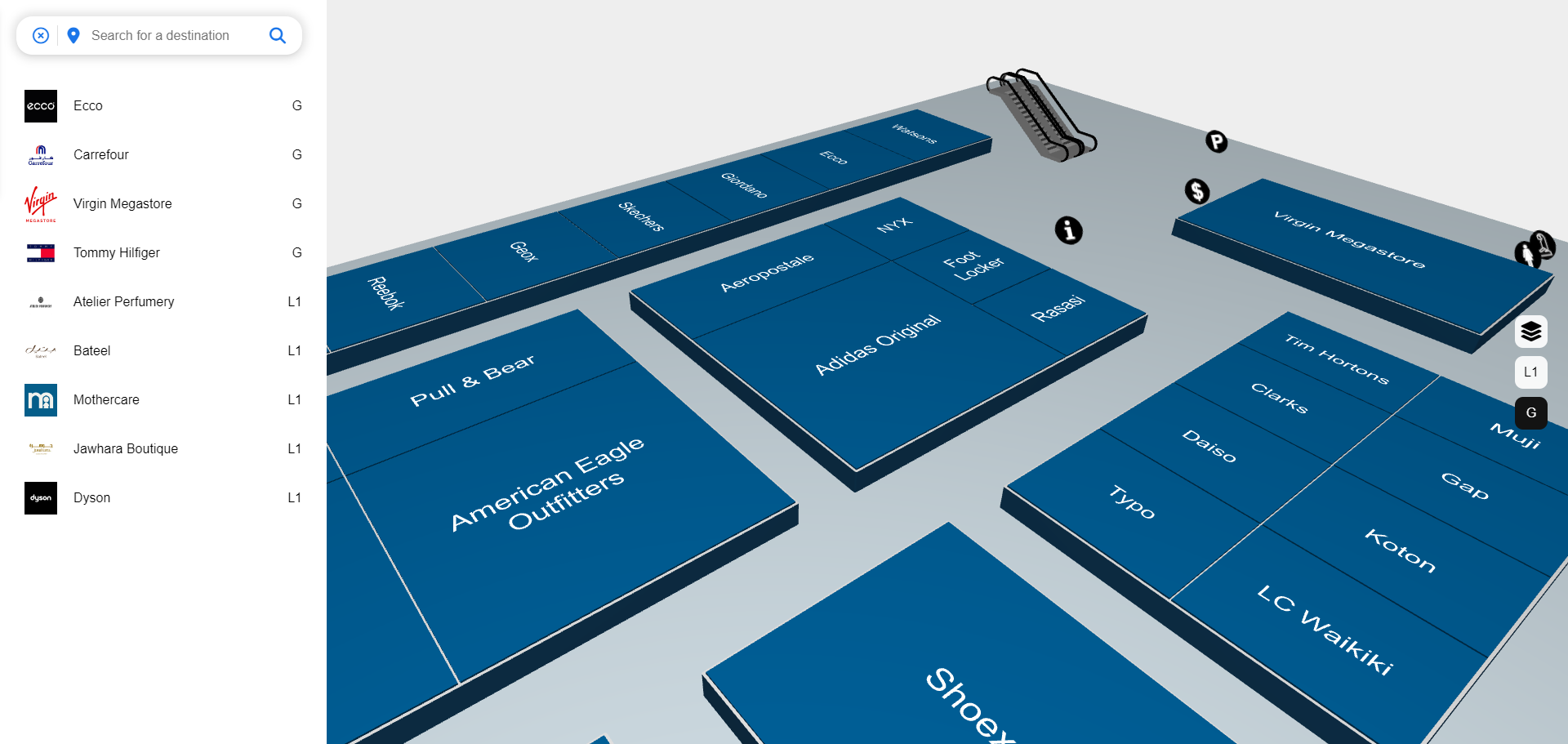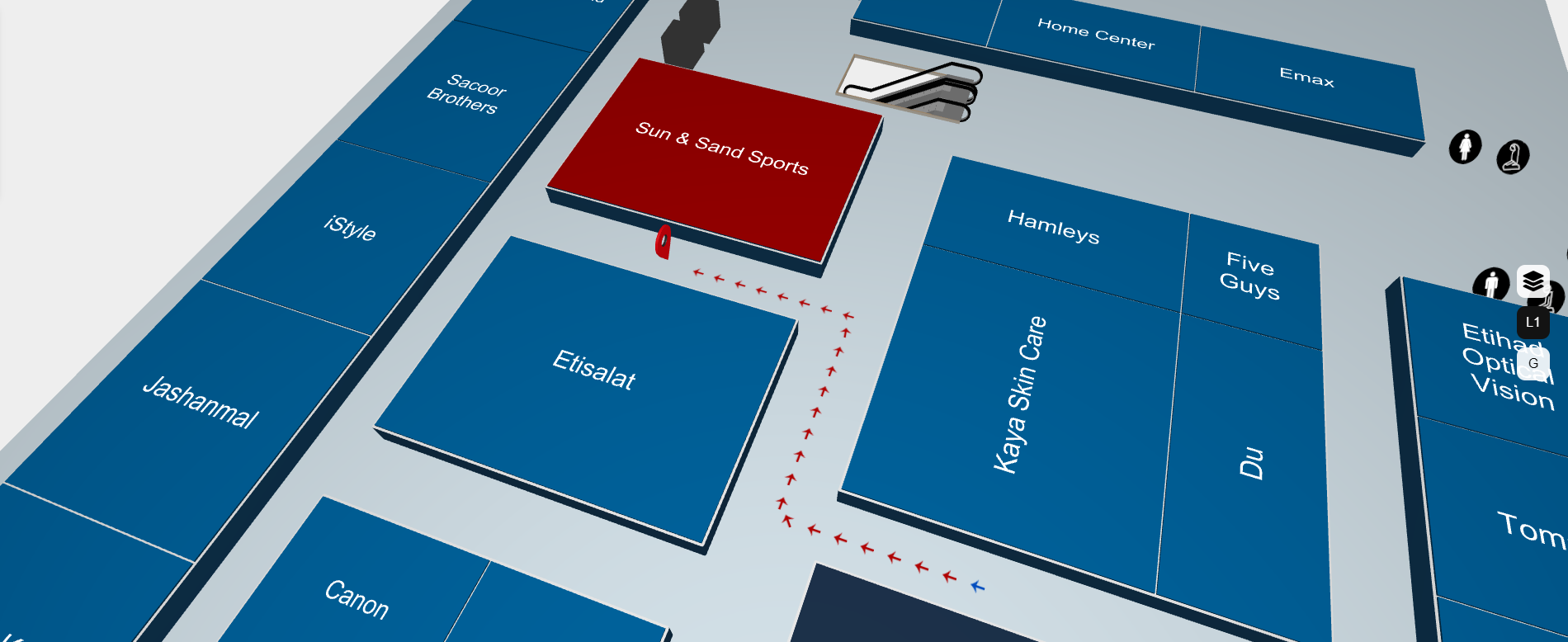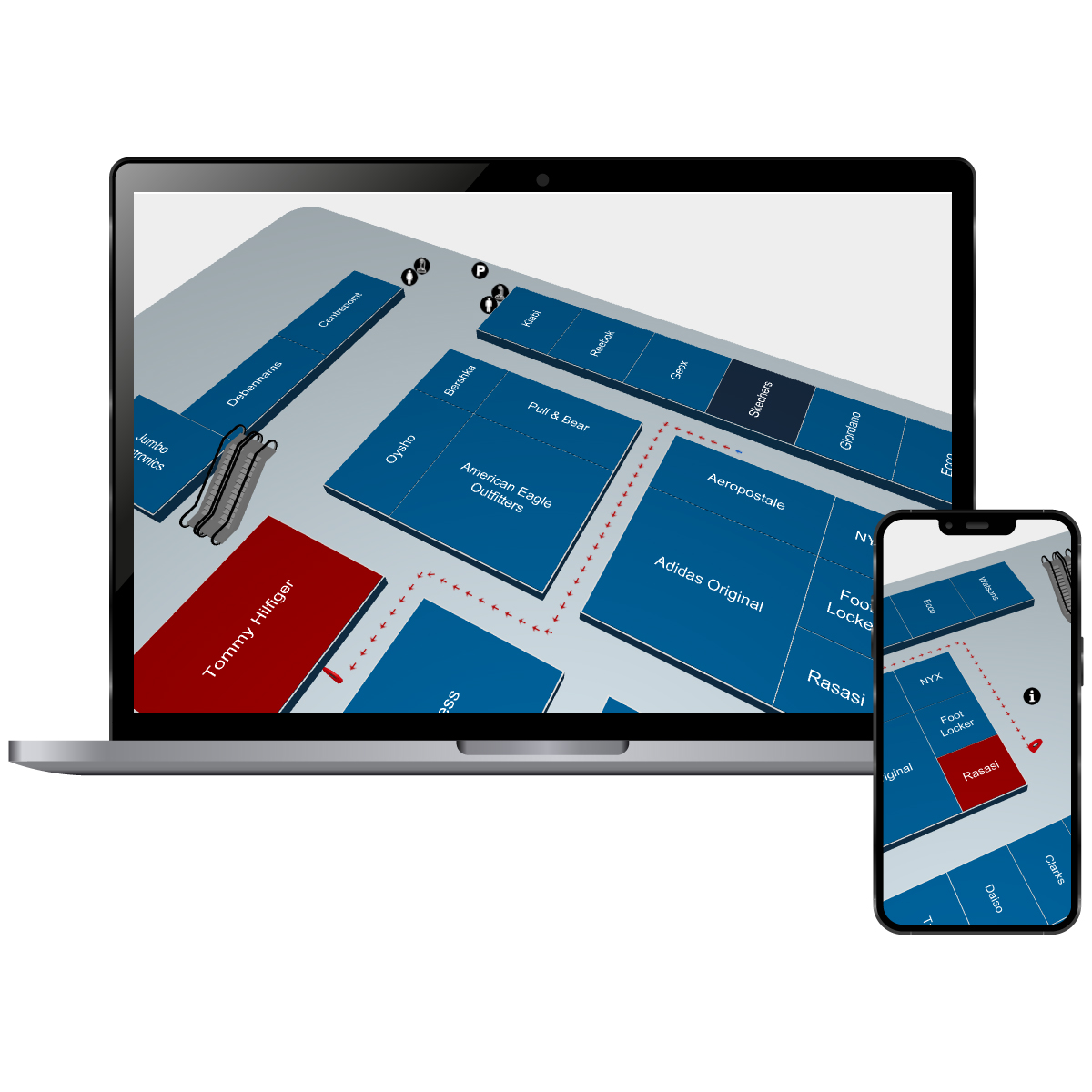As the world becomes increasingly interconnected and complex, the need for efficient indoor mapping and navigation solutions has never been more critical. Indoor mapping and navigation systems are revolutionizing the way we navigate through complex indoor environments, providing a seamless and intuitive experience. From shopping malls to airports, educational campuses to museums, and exhibitions, these systems offer a plethora of benefits that enhance user experience and operational efficiency. In this blog, we will explore why indoor mapping and navigation are essential for various types of venues and the specific advantages they offer.
Shopping Malls
In large shopping malls, navigating through numerous stores and facilities can be overwhelming for visitors. Indoor mapping and navigation systems help in:
Enhanced Customer Experience: Visitors can easily locate stores, restrooms, dining areas, and other amenities, improving their overall shopping experience through indoor wayfinding solutions.
Increased Foot Traffic: By providing clear directions and highlighting promotions, malls can drive more traffic to specific stores and areas using indoor mapping technology.
Data Insights: Mall management can gain valuable insights into visitor behavior, popular routes, and peak times, enabling better decision-making and resource allocation.
Airports
Airports are complex environments where efficient navigation is crucial for both passengers and staff. Indoor mapping systems offer:
Streamlined Passenger Flow: Passengers can easily find check-in counters, gates, baggage claims, and other facilities, reducing congestion and improving flow.
Reduced Stress: Clear navigation helps passengers manage their time better, reducing the stress of missing flights or getting lost using indoor navigation systems.
Operational Efficiency: Airport staff can use indoor navigation to optimize their routes and improve overall efficiency in managing passenger movements.
Educational Campuses
Large educational campuses can be challenging to navigate for students, staff, and visitors. Indoor mapping and navigation systems provide:
Improved Orientation: New students and visitors can easily find classrooms, administrative offices, libraries, and other facilities, making their campus experience more pleasant.
Safety and Security: Real-time navigation can guide individuals to emergency exits and safe zones in case of emergencies through indoor wayfinding solutions.
Event Management: During events or conferences, attendees can find their way to specific locations without confusion using indoor mapping technology.
Museums
Museums often have intricate layouts with various exhibits spread across multiple floors. Indoor navigation systems enhance the visitor experience by:
Personalized Tours: Visitors can receive guided tours tailored to their interests, ensuring they don’t miss any important exhibits.
Increased Engagement: Interactive maps and real-time information about exhibits engage visitors and enhance their learning experience through indoor wayfinding systems.
Visitor Flow Management: Museums can manage visitor flow better, reducing overcrowding in popular areas and ensuring a smooth experience for all.
Exhibitions
Exhibition centers host a variety of events, making navigation crucial for attendees. Indoor mapping systems offer:
Efficient Navigation: Attendees can easily find booths, seminar rooms, and other facilities, maximizing their event experience through indoor navigation technology.
Exhibitor Benefits: Exhibitors can attract more visitors to their booths by providing clear directions and highlighting their locations on the map through indoor wayfinding solutions.
Enhanced Experience: Interactive maps can provide real-time updates and information about ongoing events and schedules through indoor mapping technology.
Conclusion
Indoor mapping and navigation systems are indispensable tools for enhancing the experience of visitors and improving operational efficiency across various types of venues. By adopting these technologies, venues can offer better services, ensure safety, and gain valuable insights into visitor behavior. The benefits are clear, and the implementation of indoor navigation systems is a step forward in creating smarter, more efficient spaces.
For further reading, check out these resources:
IEEE: A Survey of Indoor Localization Systems and Technologies
NCBI: Indoor Positioning Technologies: Analysis and Future Trends
SAGE Journals: The Impact of Wayfinding Systems on Venue Experience


